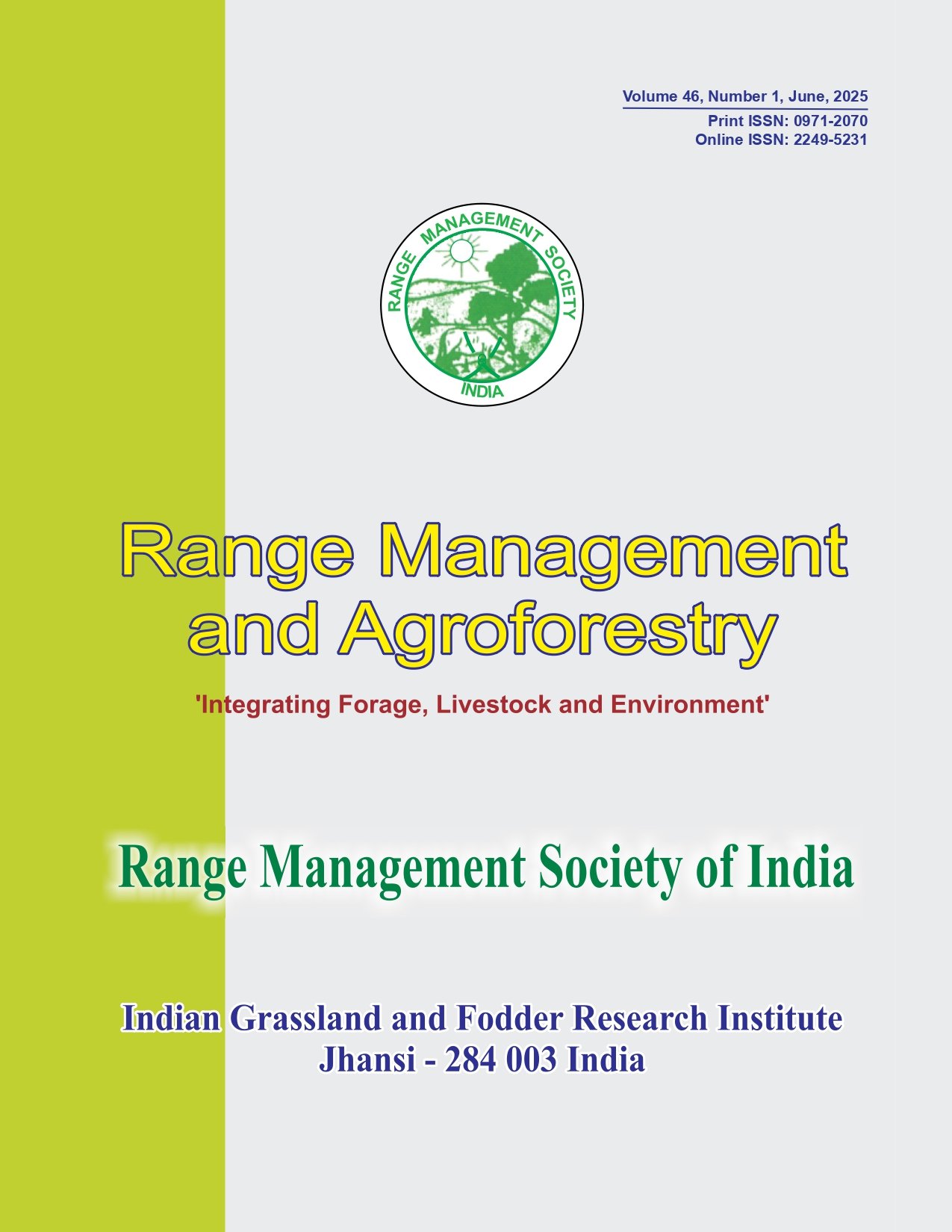Identification and genetic estimation of nutritional parameters of QPM hybrids suitable for animal feed purpose
Keywords:
Diallel, GCA, Heterosis, QPM, SCAAbstract
Maize plays a significant role in human as food and livestock nutrition as feed. Quality protein maize (QPM) contains, in general, 55% more tryptophan and 30% more lysine in protein than that of normal maize. The QPM hybrids are rich in nutrition with higher biological value (80%) and have more balanced amino acid composition than normal maize, and if, fed to animal that improves health and milk production. In the present experiment, attempt were made to develop QPM hybrids using eight QPM inbreds lines, 56 single cross hybrids including reciprocals were developed using Griffing (1956) full diallel to estimate the genetic components and heterosis for quality parameters of grain used for feed purpose. General combining ability and specific combining ability effect were significant for all the quality traits. The parents VQL-1 and BQPM-4 were found to be good general combiner for quality traits. The variance due to dominance effects were found to be much higher compared to the variance due to additive effects, signifying the utility of heterosis breeding in the QPM genotypes. In case of reciprocal crosses it is governed by dominance effect. The hybrids identified as good performers were VQL-1 x VQL-2 and CML-161 x VQL-5 for protein content; BQPM4 x VQL-1 for tryptophan content; BQPM-2 x VQL-2 for starch content; BQPM-4 x VQL-5, HKI-163-1-2 x VQL-2 and VQL-1 x VQL-2 for sugar content. These hybrids may be utilized for production of grain, which is used for feeding livestock and monogastric animals.




